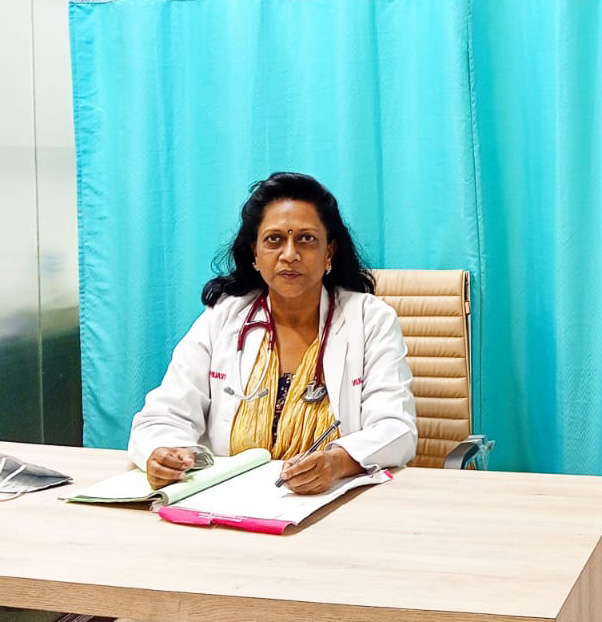A hernia can be a real burden, causing discomfort, pain, and disruptions in daily life. Once surgery becomes necessary, the key decision is whether to opt for laparoscopic or open hernia repair. Each approach has its advantages and drawbacks, and understanding them can help you make an informed choice.
Dr Amita Jain, a leading laparoscopic surgeon and specialised hernia repair surgeon in Delhi explains the key differences between these two procedures to help patients choose the best option.

What are the Surgical Approaches for Laparoscopic and Open Hernia Surgery?
Open hernia surgery involves making a single large incision at the hernia site. The surgeon pushes the bulging tissue back into place, stitches the weakened muscle, and may use mesh reinforcement to prevent recurrence. This method is effective for larger or complex hernias but requires a longer recovery period.
Laparoscopic hernia surgery, also known as keyhole surgery, is a minimally invasive procedure. It involves making small incisions through which a laparoscope (a tiny camera) and surgical instruments are inserted. The hernia is repaired, often with mesh reinforcement. Since this method avoids large incisions, recovery is typically faster with less post-operative pain.
Which One Is Better?
The choice between open and laparoscopic surgery depends on several factors, including anesthesia requirements, suitability for different types of hernias, recovery time, cost, and surgical duration. Open hernia surgery can be performed under local or general anesthesia, whereas laparoscopic surgery requires general anesthesia.
Open surgery is more effective for large or complex hernias such as femoral and umbilical hernias, while laparoscopic surgery is preferred for smaller hernias like inguinal and incisional hernias. Recovery is generally longer in open surgery due to larger scars, whereas laparoscopic surgery allows for a quicker return to normal activities with minimal scarring and less post-operative pain.
Cost and surgical duration also play a role in decision-making. Open hernia surgery is usually less expensive and can take anywhere from 30 minutes to 6 hours, depending on complexity. Laparoscopic surgery is more costly and typically takes 1 to 5 hours to complete.
Pros and Cons of Each Approach
Open surgery is highly effective for repairing large or complex hernias, providing easier access for surgeons to repair defects. It is also a suitable option for patients who cannot undergo general anesthesia. However, the downside is that it involves a large incision, leading to noticeable scarring, a longer recovery period, and a higher risk of post-operative complications such as infection and pain.
On the other hand, laparoscopic surgery is minimally invasive, involving smaller incisions, less bleeding, and faster recovery. Patients experience lower chances of post-surgical complications, making it a preferred choice for many. However, this approach requires general anesthesia, has a longer surgical duration, is more expensive, and may not be suitable for very large hernias.
Choosing the Right Surgery
The decision ultimately depends on various factors, including the type and size of the hernia, its location, previous hernia surgeries, the patient’s overall health, and lifestyle needs. For instance, athletes and active individuals may benefit from laparoscopic surgery due to the quicker recovery time, whereas patients with larger or recurrent hernias may require open surgery.
There is no single approach that is best for everyone. Open surgery is ideal for larger hernias, while laparoscopic surgery offers a faster recovery with minimal scarring. Consulting an experienced surgeon is crucial in determining the most suitable procedure based on individual conditions and lifestyle needs.

Dr Amita Jain is a surgeon with the highest degree of professional competence, precision and surgical craftsmanship. Performed all complicated general surgery procedures with in depth knowledge of invasive and few minimal invasive and onco surgical techniques. Underwent special training in trauma, executed various trauma-related complex life-saving neurosurgical procedures, reconstructed injured mangled limbs and performed vascular and reconstructive procedures with critical care.
Dr Amita Jain holds 28 plus years of rich experience in Trauma and General Laparoscopic Surgeries (including Gallbladder stone removal, appendix removal, hernia repair surgery, piles and fissure surgeries). She was the Professor Surgery of at the Army College of Medical Sciences and Base Hospital Delhi Cantt. In 1994 she was commissioned as Surgeon under the United Nations Mission in Congo. From 2020 to 2022, she worked with Bansals Hospital. Currently, Dr Amita Jain is the Senior Consultant, (Speciality: General and Laparoscopic Surgeon) at Artemis Lite Hospital, New Delhi and Sr. General and Laparoscopic Surgeon at Rainbow Children Hospitals, Malviya Nagar, Delhi.